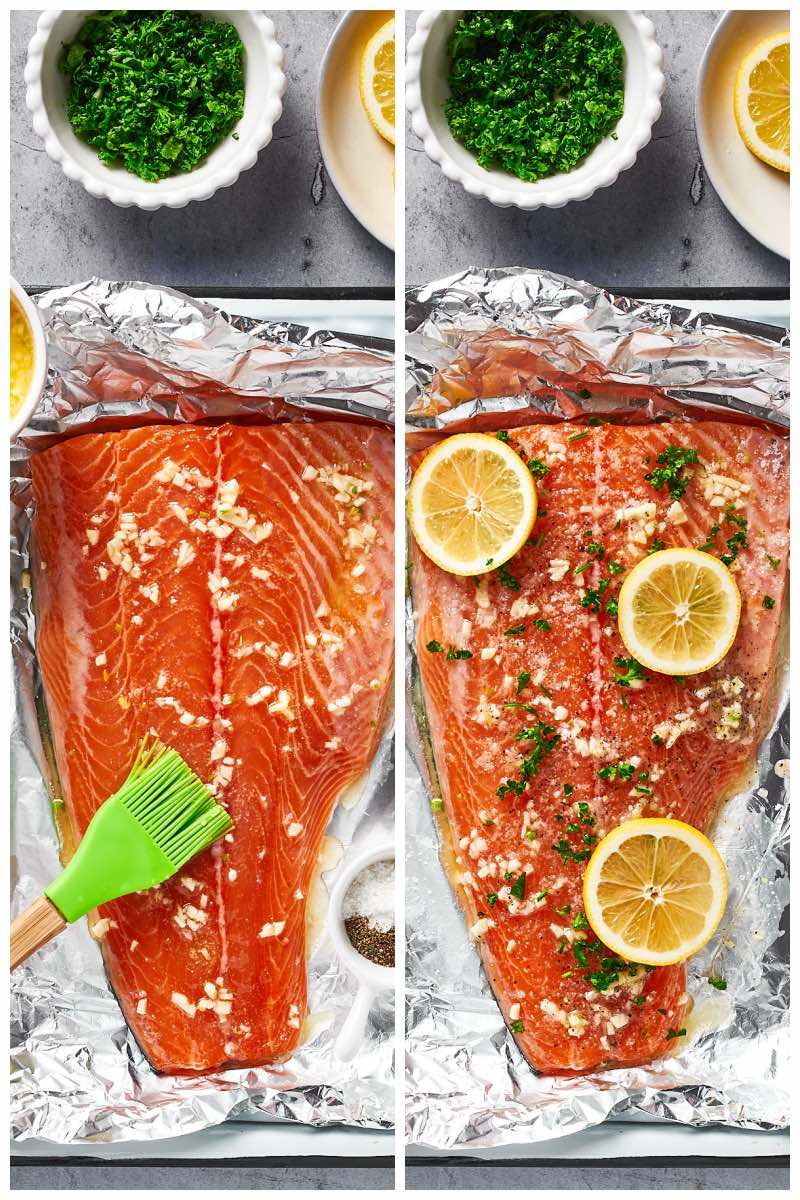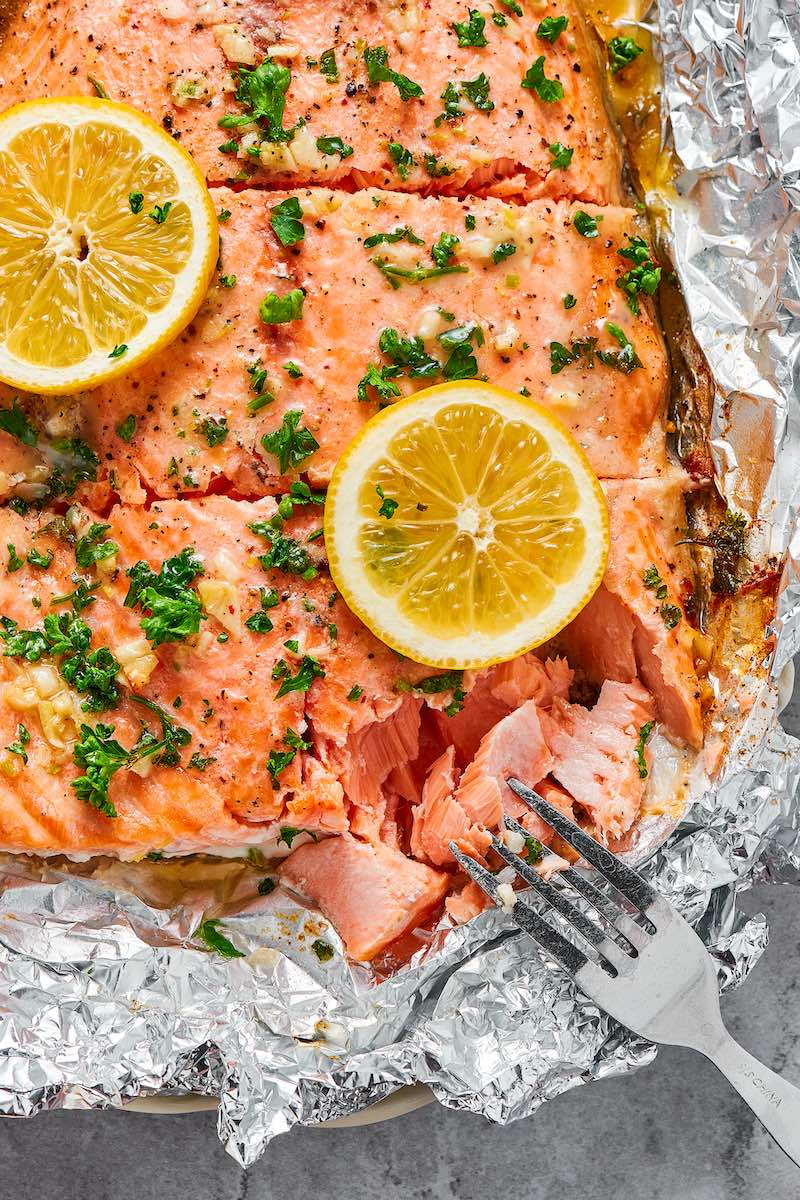Baked keta salmon in tin foil
The simplest and tastiest method to cook salmon is with this keta recipe. Seasonings should always be kept to a minimum and the cooking method should be straightforward due to its naturally sweeter flavor. Our preferred method of eating it is to bake it in tinfoil, which requires little preparation. The salmon turns out moist and flaky.
It’s ideal for people who follow a low-calorie, low-carb, or gluten-free diet because it only requires 5 ingredients and only takes 20 minutes to prepare.
The salmon fillet should first be pat dried to remove any extra moisture. Melted butter and minced garlic should be combined in a small bowl.
Then, line a sizable baking pan with tin foil, leaving space on both sides to do so. Place the salmon skin side down onto it. After applying the garlic butter mixture to the top, season with salt, pepper, and parsley. Cover the lemon with tin foil after placing it around the edges.
After baking the salmon for the next 17 to 20 minutes, top with more parsley to serve.

Keta salmon can be prepared in a variety of ways, but baking it in tin foil is the simplest and tastiest. Here is why-.

Keta salmon, formerly known as chum, has undergone some rebranding recently to shed its reputation as a salmon variety with a poorer flavor. Compared to king or sockeye salmon, it does have a milder flavor, but its firm flesh holds up well to many grilling and baking recipes. Cooking keta salmon may be the ideal choice if your recipe calls for strong seasoning, if you’re trying to appease someone who doesn’t like stronger-tasting salmon, or if you’re looking for an affordable wild Alaskan salmon option that you can eat frequently. Consider its orange-pink flesh as a blank slate for your culinary and seafood experiments.
Although keta salmon sounds more upscale, keep in mind that it doesn’t have to be the main course of the entire meal. This wild salmon is a natural choice to pair with a second meat, such as sausage or pancetta, due to its low fat content and clean flavor. When catering or hosting an event, serving groups that include a mix of vegetarians and meat eaters, grilled and lightly shredded keta salmon can be a great optional add-on for pastas, salads, and breakfast.
Wild-caught keta salmon is best preserved by flash freezing, but this method isn’t indestructible. While salmon that has been frozen can be consumed almost indefinitely without any problems, after six to nine months the oil and fat content may start to lose quality. Another unnoticed benefit of the low-fat content of keta salmon is that it has a longer frozen shelf life. Within as little as three months, the quality of fattier king salmon in the freezer may start to decline.
Keta salmon can be grilled, pan-seared, baked, broiled, poached, or smoked. Despite having less fat, keta salmon fillets consistently have a nice, flaky texture and require little preparation. The best option when ordering keta salmon, a larger but slimmer variety of salmon, is to have the portions already cut for you. As an alternative, you can prepare and serve whole keta salmon fillets as part of a buffet-style food spread if you have the space on the grill and you want to wow your family or your guests.
Preheat oven to 400° F. Lightly oil or pan spray an oven proof baking dish. Season the keta fillets with salt and pepper and arrange them in the pan. Season each salmon fillet with salt and pepper. Sesame seeds should be combined on a large plate. Lightly press each filet’s top side into the seeds. Place in the prepared plan, seed side up.
